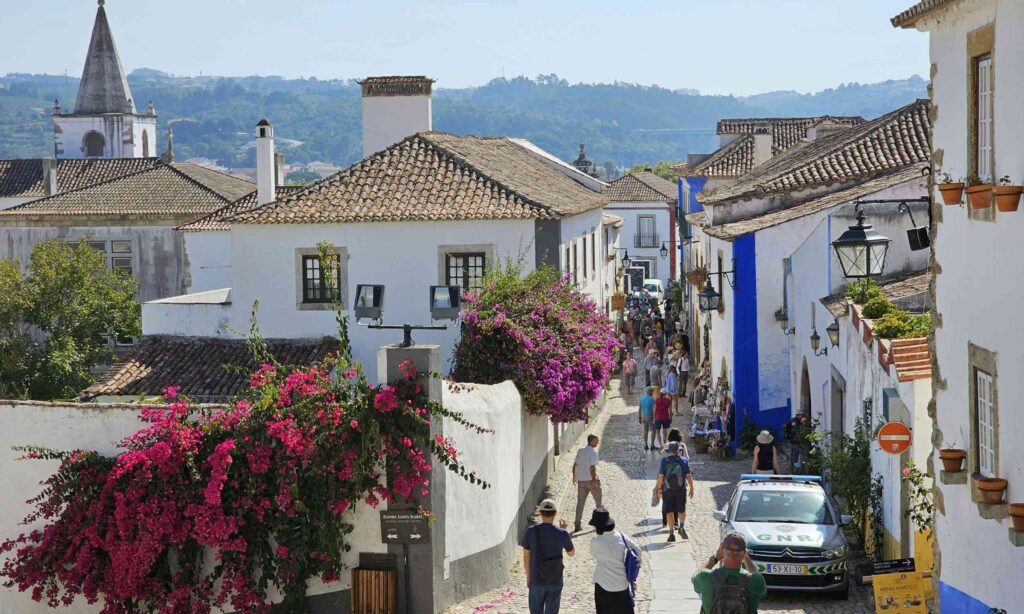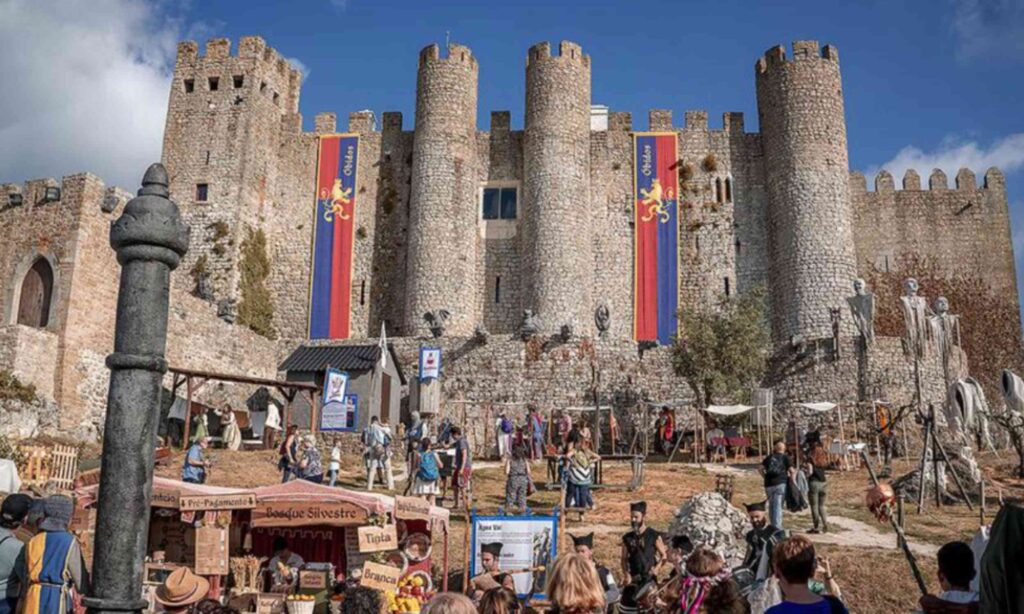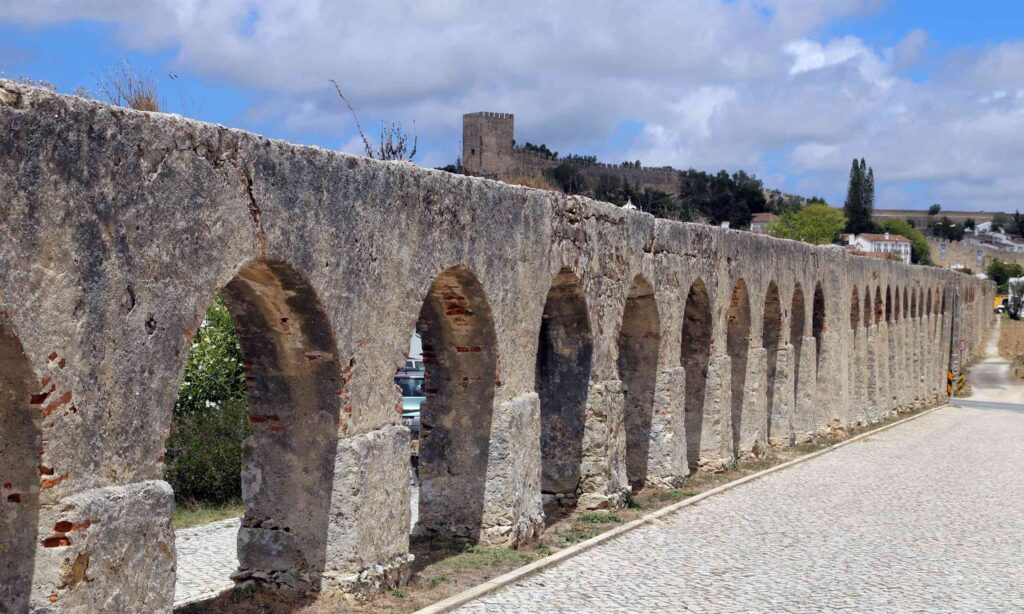Sitting on a hilltop in Portugal’s Oeste region, Óbidos is one of the country’s most enchanting towns. With its whitewashed houses, cobblestone streets, and medieval walls that seem to have frozen time, it feels like stepping into a storybook. Though small in size, Óbidos is packed with charm, history, and cultural treasures that make it an essential stop on any trip through central Portugal.
This fortified town has a past as rich as its present-day appeal. Once gifted by Portuguese kings to their queens as part of their wedding dowries, Óbidos became known as the Town of Queens. Its walls, castle, and carefully preserved architecture carry echoes of the Middle Ages, while festivals and local traditions keep the town lively and relevant today.
Whether you’re drawn by history, culture, or the sheer beauty of walking streets that look unchanged for centuries, Óbidos offers a window into Portugal’s soul.
A Walk Through History

Óbidos has roots that stretch back to Roman times, but it was during the Middle Ages that the town flourished. In 1148, King Afonso Henriques, Portugal’s first monarch, captured it from the Moors. Its strategic hilltop location made it a prized possession, and soon after, Óbidos was tied to Portugal’s royal family.
For centuries, the town was gifted to queens as part of their wedding dowries. This royal connection led to the construction of churches, improvements to fortifications, and patronage of the arts. The massive castle, now a pousada (historic inn), was once the residence of nobility and still dominates the skyline.
The town’s fortifications remain remarkably intact, with walls that loop around the settlement and offer panoramic views of the surrounding countryside. Walking the ramparts is one of the most memorable experiences in Óbidos, though the uneven stones require caution.
Its streets are lined with whitewashed houses adorned with splashes of bright blue and yellow paint, framed by cascades of bougainvillea. The town center is compact and pedestrian-friendly, making it easy to explore on foot.
Festivals and Cultural Life

Despite its small size, Óbidos boasts a surprisingly rich cultural scene. Beyond the chocolate festival, the town is also famous for:
- Medieval Market (Mercado Medieval): Every summer, Óbidos returns to its roots with a festival that transforms the town into a living museum. Costumed actors, jousting tournaments, medieval music, and stalls selling hearty food recreate the atmosphere of centuries past. Visitors are encouraged to dress up and join the revelry.
- International Chocolate Festival: For two weeks every spring, the medieval town is filled with chocolate sculptures, workshops, tastings, and events that transform its streets into a sweet lover’s paradise. The event alone attracts thousands of visitors from around the world.
- Christmas Village (Vila Natal): During December, Óbidos becomes a wonderland for families. With light displays, ice rinks, and Santa’s village, it’s one of the most festive spots in Portugal.
- FOLIO Literary Festival: Óbidos has even positioned itself as a literary town, hosting one of Portugal’s major book festivals. With readings, workshops, and exhibitions, FOLIO attracts writers and readers alike.
These events breathe modern energy into a town rooted in history, ensuring Óbidos appeals to more than just history buffs.
Must-See Spots in Óbidos

Though compact, Óbidos packs plenty to see and do. Here are some highlights:
- Porta da Vila: The grand gateway into Óbidos is decorated with traditional blue-and-white azulejos (ceramic tiles) and leads directly onto Rua Direita.
- Castle of Óbidos: This 12th-century fortress dominates the town. While much of it is now a hotel, the surrounding walls are open to the public.
- Church of Santa Maria: Located in the main square, this Renaissance church hosted the wedding of King Afonso V and his cousin, Isabella of Coimbra, in the 15th century. Inside, its paintings and tiles are exquisite.
- Aqueduct of Usseira: Built in the 16th century to bring water into Óbidos, this 3-kilometer aqueduct is an impressive engineering feat visible from the town’s outskirts.
- Bookstores: As a designated “literary town,” Óbidos has several unique bookshops, including one set inside a former church and another in the old market hall.
A Taste of Óbidos

Food and drink play a central role in the Óbidos experience. Ginjinha is the star, but the town also offers cozy taverns serving Portuguese classics like grilled sardines, caldo verde soup, and rich stews. During festivals, food stalls add roasted meats, pastries, and mulled wine to the mix.
A recommended stop is Jamón Jamón, a small restaurant tucked near the castle that combines Portuguese and Spanish flavors with local wines. For dessert, a chocolate cup of ginjinha is non-negotiable.
One Day in Óbidos: A Suggested Itinerary
If you’re visiting Óbidos on a day trip from Lisbon (just an hour away), here’s how to make the most of it:
Morning:
- Arrive early to beat the crowds and enter through the Porta da Vila.
- Walk down Rua Direita, sampling shops and grabbing a coffee.
- Visit the Church of Santa Maria and nearby square.
Midday:
- Climb the castle walls for panoramic views of the countryside.
- Enjoy lunch at a local tavern such as Jamón Jamón or A Nova Casa de Ramiro, trying regional dishes with a glass of Portuguese wine.
Afternoon:
- Visit one of Óbidos’s unique bookstores.
- Explore the Aqueduct of Usseira just outside town.
- End with a chocolate cup of ginjinha before heading back.
Óbidos may be small, but it offers a mix of history, charm, and culture that leaves a big impression. Whether you come for a festival, a day trip, or a quiet stroll through its timeless streets, this medieval gem captures the imagination like few places can.
